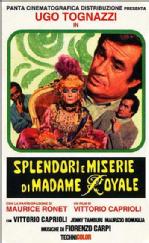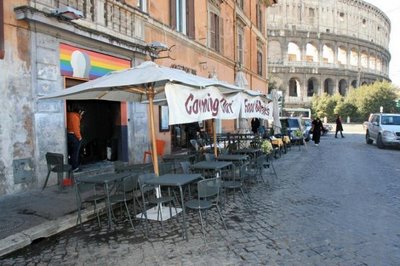Queering Rome
Workshop
University of Warwick, 28 June 2013
R1.03, Ramphal Building
Speakers: Derek Duncan (St. Andrews), Francesco Ventrella (Sussex), Lele Gragnolati (Oxford), Karl Schoonover (Warwick), John David Rhodes (Sussex)

The clash in the year 2000 between the Catholic Church’s Jubilee and the Circolo Mario Mieli’s LGBT World Pride, which culminated in Pope John Paul II’s statement that the Pride was ‘un’offesa ai valori cristiani’, pays testament to a politics of space in Rome that aims to exclude and deny access to the city to those groups which are not considered part of the dominant and normalized notion of identity. This workshop, part of the ‘Roman Modernities’ AHRC network, attempts to challenge the dominant, exclusive, totalizing and universal idea of Rome, by shedding new light on its queer, subversive and less normative presences. The speakers will unite and challenge the subversive theoretical notions and figures that emerge in modern Rome’s cultural environment (from Pier Paolo Pasolini to Dario Bellezza, from Mario Mieli to Giò Stajano) with global queer theories (Freeman, Freccero and queer temporality, Edelman and futurity, hooks and race/gender) and readings of politicised space in Rome (cruising grounds, saunas, peripheries). By thinking through representations of lesbians, gays, bisexuals and transsexuals, as well as notions of the closet or the implicitly queer in relation to Rome; by re-reading Rome’s modern cityscape as a field of tensions where non-normative identities are pushed into peripheral spaces of indistinction; and by mapping out the homosexual identity alongside Rome’s specifically late modernity, the workshop will create the space to consider a queer theory of Rome / Roman queer theory.

Programme:
10.00. Dom Holdaway & Filippo Trentin (Warwick) – ‘Introduction: Queering Rome’
10.30. Derek Duncan (St Andrews) – ‘Il primo omosessuale dichiarato d’Italia: Giò Stajano’s Ephemeral Modernity’
Questions of temporality are central to recent queer theories just as issues of periodisation exercised critics such as Sedgwick and Halperin in an earlier moment. The idea of chrononormativity has become a useful tool for understanding one axis along which straight hegemony exerts its influence. What I want to begin exploring here is the link between chronormativity and queer taste – in particular the charged disavowal of the effeminate homosexual whose anchronism with respect to contemporary prefered styles of masculinity is patent yet whose persistent presence suggests that sadly perhaps his time is not yet quite up.
As well as being Italy’s first self-confessed homosexual, Giò Stajano later became a renowned transexual as well as published writer. Friend of the rich and famous, Stajano enjoyed celebrity status in the 60s yet his popularity did not endure nor has he provided a durable model for subsequent generations of queer theorists. This paper looks at the eclipse of this queer icon and the cultural preference for alternative more modern queer masculinitites.
11.30. Coffee
12.00. Francesco Ventrella (Sussex) – ‘In the Bushes of Rome’
For the antiquarian visual culture of the 18th century, the bushes of Rome were an integral element to the discovery of the ancient past. Cherished as a natural preservative of the old ruins, overgrown vegetation in Rome was associated with discovery, and at the same time also a sexual metaphor, sometimes literalized in outdoor sex. This imagination acquired an ethnic resonance in popular erotic photographs around 1900, and also materialized as a class environment in 1950s cinematic allusions to the connection between ancient ruins and sex.
Today, amidst the gaze of tourists, the bushes of Rome remain a neglected feature because they offer no spectacle: they do not participate in the economy of mass-tourism; they resist the operative life enforced by the monumentalized city. Yet, this paper will propose that we ought to look at the bushes which grow around archaeological ruins if we want to encounter a queer economy to contrast the historicist image of the city.
13.00. Lunch
14.00. Manuele Gragnolati (Oxford) – ‘Differently Queer: Pier Paolo Pasolini's Petrolio and Elsa Morante's Aracoeli'
My paper will focus on Pier Paolo Pasolini's Petrolio and Elsa Morante's Aracoeli -- two novels that show several mutual connections, including their Roman setting -- and is interested in exploring how the queer sexuality that they both place at their core is reflected in their textuality but differs from each other. In particular, I will argue that both novels mobilize a form of temporality that resists a sense of linear and teleological development and that, instead, appears contorted, inverted, suspended and thereby allows for the articulation of queer desires and pleasures that cannot be inscribed in a normative logics of progression or productivity. But while the fragmented movement of Petrolio's textuality corresponds to a post-Oedipal and fully-formed subject who wants to shatter and annihilate himself by replicating the paradoxical pleasure of non-domesticated sexuality, Aracoeli's poetic operation consists in the staging of an interior journey, backwards through memory and the body, towards an acceptance of the partiality and fluidity of an inter-subjectivity that is always in the process of becoming.
15.00. Karl Schoonover (Warwick) – ‘Perverted Witness: Bertolucci and the Gay Gaze’
At first glance, Bertolucci’s early film La commare secca (1962) appears to follow Neorealism’s lead when it comes to representing the eyewitness, seeming to reinforce a postwar humanist optic by offering the corpse as an expressive form of testimony on display for an outside onlooker. Yet Bertolucci’s film narrates our look’s relationship to the imperiled body in manner quite different from canonical Neorealism, and it does so by locating its most truthful testimony in the figure of the effeminate and politically questionable gay man. I will argue that the film mobilizes this ‘pervert’ to destabilize the idea of the ocular testimony (testimone oculare) and interrupt presumptions about what objective looking looks like. By redeeming the homosexual’s look, this film renegotiates the relationship of spectator to realist spectacle, of viewer to victim. But what are the consequences of the film using the homosexual as a figure to critique our assumptions about the truthful and verifying look?
16.00. Tea & Coffee
16.30. John David Rhodes (Sussex) – ‘Rome, Italy?’
This paper will explore the place name in Rome and Rome as a place name as a key for understanding the promise of queer pleasure. Not only places themselves, but the names of places offer ways of understanding a Roman queer imaginary.
